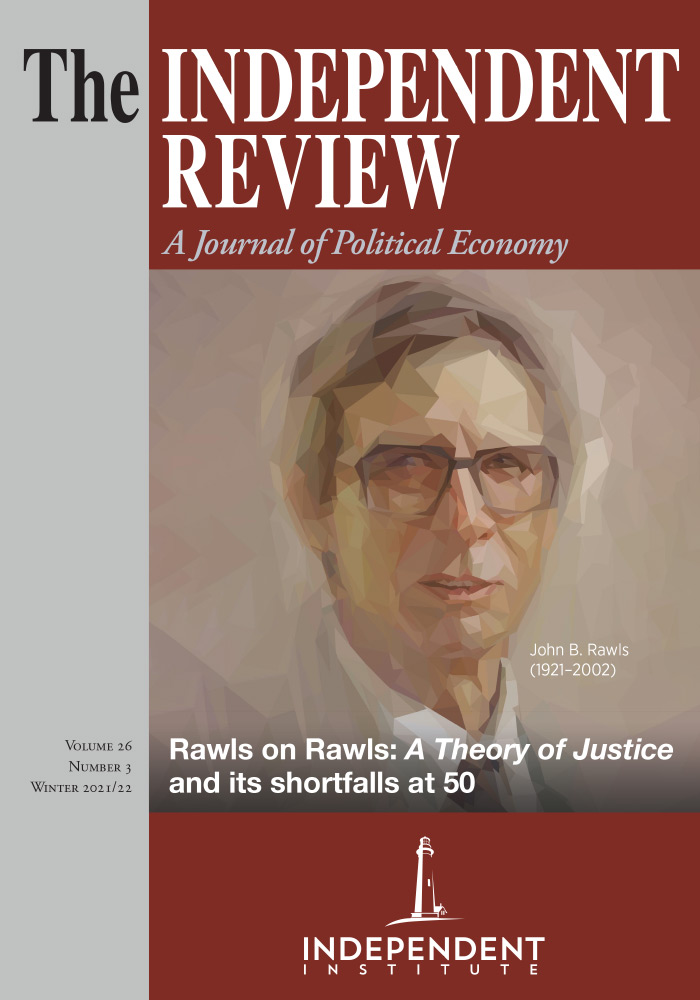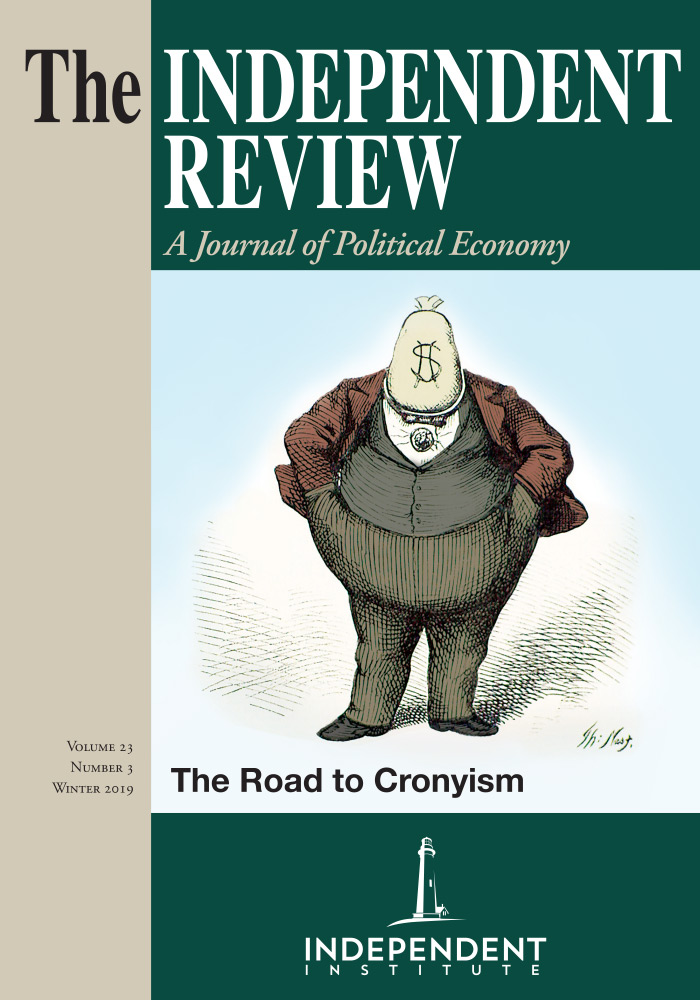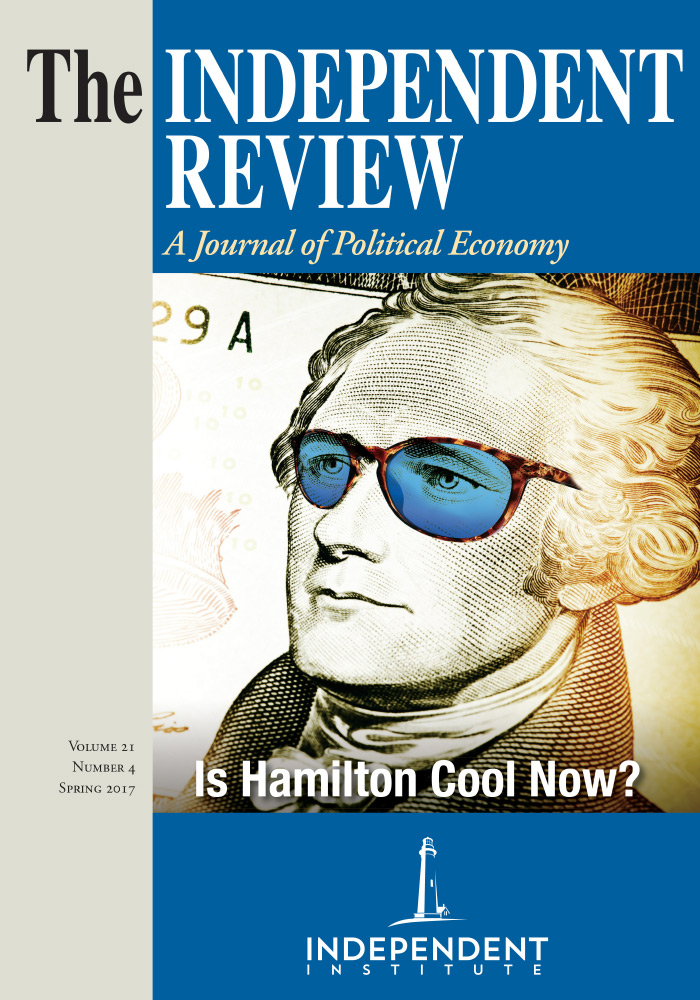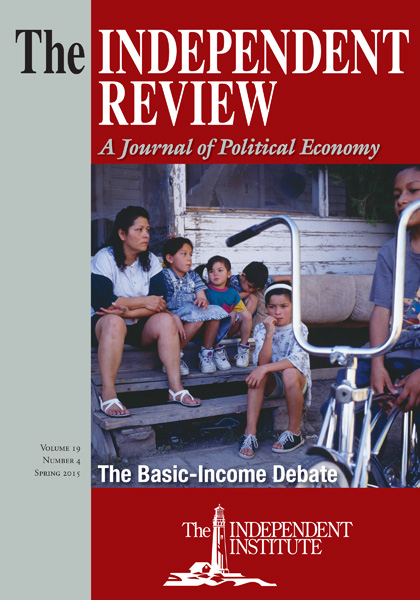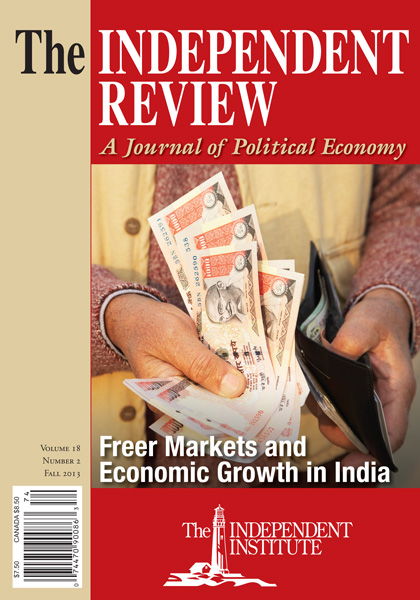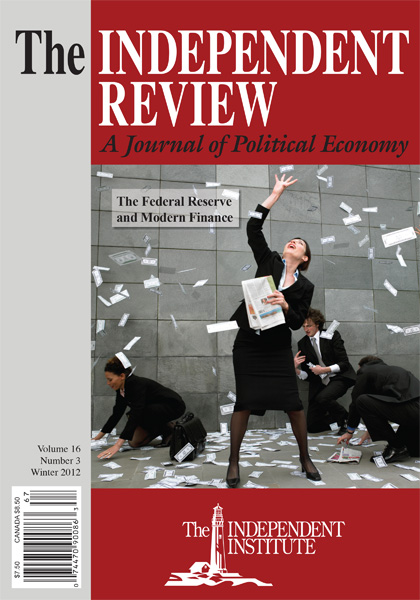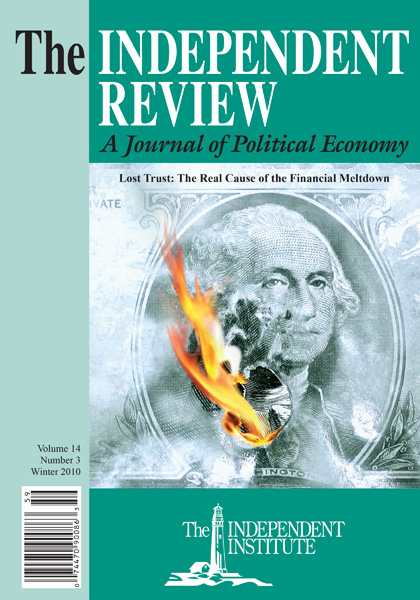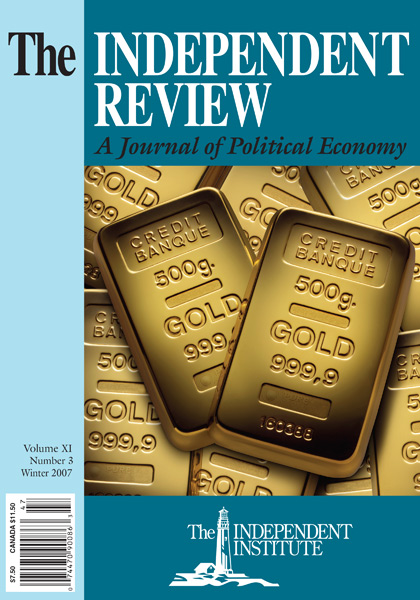According to a new analysis of voter registration data, Democrat economists at the Federal Reserve outnumber Republicans 10 to 1. The imbalance is even larger among economists in leadership positions, among younger economists, and among female economists. What implications does this have for the Fed’s official actions and purported political neutrality?
Article
Economists play a vital role in the Federal Reserve System (Fed) by producing research and conducting analyses and forecasts for the Federal Reserve System. As a result, they influence the formulation and execution of U.S. monetary and financial policies. Because of the nonpartisan nature of the Federal Reserve System, research and policy recommendations made by the Fed economists are expected not to be influenced by the political leanings of those economists. Recently, however, research and speeches of the Fed economists are increasing focusing on climate change, gender, race, and inequality.[1] Regional Federal Reserve Banks and the Board of Governors of the Federal Reserve have conducted numerous seminars and conferences and publishing research papers on politically-charged topics.[2] Web pages of several Federal Reserve banks’ websites (San Francisco, Atlanta) indicate their commitments on solving economic inequality, climate change, racism, and gender discrimination. For instance, the home page of Federal Reserve Bank of New York states that:
The New York Fed stands in unity with all those who oppose racism, hate, and violence. We join them in a shared desire to root out the intolerable inequities and injustice grounded in systemic racism that persist in our society. We are firm in the belief that economic equality is a critical component for social justice and that we will never have the truly inclusive and strong economy we seek until access to health, education, safety, and justice knows no racial or other boundaries. We are dedicated to understanding and finding solutions to the numerous forms of inequity that communities of color experience and working with communities in our District to address deep-seated equities. We are steadfast in our commitment to work for a more equitable economy and society for all, and will redouble our efforts in pursuit of this essential mission.
The Fed has been encouraged to do more to solve the climate change, racism, inequity, and gender discrimination by politicians, including the current U.S. President and senior Senators. In fact, even the recent nominations of the Fed Chair has been linked to those concerns. Former and current Fed Chairs have reaffirmed their commitments to the political activism of the Fed in numerous occasions. For instance, former Fed Chair Janet L. Yellen gave a speech about her concerns about inequality at the Federal Reserve Bank of Boston’s conference. In that speech, she stated that “the extent of and continuing increase in inequity in the United States greatly concern me.” Current Fed Chair Jerome Powell also in a speech said the coronavirus crisis is worsening racial inequality and promised to reverse the massive U.S. job losses that have fallen most heavily on blacks and minorities.
This paper is related to the literature looking at the political activism of the Federal Reserve System. White (2005) shows that the Federal Reserve System sponsors the monetary economics research of a large number of economists through its research program. He suggests that the Fed’s sponsorship of these monetary economists can influence what is researched and the conclusions of that work in monetary economics. Fabo, Jancokova, Kempf, and Pastor (2021) confirms the hypothesis of White (2005) by showing that in the case of the macroeconomic effects of quantitative easing (QE), papers of central bank researchers report larger effects of QE on output and inflation than those of academic economists. Fabo et al. (2021) also demonstrate that central bank researchers that report larger QE effects have better career outcomes. In addition, Binder (2021) finds that populism puts pressure on central banks and causes the Federal Reserve to amend its long-term strategy. Binder and Parajon-Skinner (2021) also show that the topics of research papers published across the twelve regional reserve banks have become more politicized over the past 15 years. They find that a large percentage of the regional banks’ research papers focuses on topics such as race, gender, climate change, and inequality. They also find that this trend is more pronounced for some reginal banks such as San Fransico, Dallas, and Boston.
The literature indicates the increasing politization of the Fed. Parajon-Skinner (2021) suggests that political activism can weaken the legitimacy of the Fed and eliminate the independence and authority of the Fed. However, the previous literature shows only indirect evidence of the politization of the Fed. In what follows, I extend the literature by showing direct evidence that the Fed as a politized body by studying the political affiliations of the Fed economists. My results indicate that political and value judgements of the Fed’s economists’ publications and analysis may be linked to their ideological backgrounds. This is concerning, as the political homogeneity of Fed economists can undermine the legitimacy of their policy recommendations and analysis in the eyes of the public. That is, the public may see the Fed as a political institution, undermining the non-partisan and independent nature of the Fed.
Previous studies look at the political ideologies of the broader economic profession. For instance, Langbert, Quain, and Klein (2016) report that Democrats outnumber Republicans 4.5:1 among economics faculty at 40 leading universities. In addition, Langbert (2020) finds a ratio of 4:1 among members of the American Economic Association (AEA), 4.1:1 among academic AEA members, and 2.5:1 among AEA members working outside academia and government. Earlier, Klein and Stern (2006) estimateds the ratio at 4.1:1 among public sector economists and 1.4:1 among private sector economists. McEachern (2006) shows Democrats outnumber Republicans 5.1:1 among AEA members in terms of political contributions. Likewise, I find that economists at the Fed are more likely to lean left than the broader economics profession.
I find that the ratio of Democrats to Republicans among Fed economists is 10.4 to 1. The lack of political diversity is especially pronounced at the Board of Governors of the Federal Reserve System (48.5:1). Economists at regional Reserve banks range from 3:1 (Cleveland) to 12:1 (San Francisco). The lack of diversity is also noteworthy in leadership positions (22.25:1). Economists who are 40 years old or younger at the Fed are more likely to lean left (20.33:1), as are female economists (27.5:1). This suggests the Fed is likely to become even less politically diverse in time.
The Data
Fed Economists
I identify economists at the Federal Reserve System using the Board of Governors of the Federal Reserve System’s website and Federal Reserve Banks’ websites for San Francisco, Dallas, Philadelphia, Boston, New York, Atlanta, and Cleveland. I retrieve the economists’ CVs from those websites and the economists’ personal websites. I exclude economists at the Federal Reserve Banks of St. Louis, Kansas City, Minneapolis, Richmond, and Chicago, as the states of Missouri, Minnesota, Virginia, and Illinois either do not keep records of the party affiliations of their registered voters or are not allowed to share those records with scholars, as outlined in state statutes.[3]
Table 1 presents the summary statistics of the sample. The sample consists of 785 economists at the Federal Reserve System, 416 of whom work at the Board of Governors of the Federal Reserve System; 369 work for regional Federal Reserve Banks.
Table 1. Summary Statistics of the Sample of Federal Reserve Economists |
|||
| Total Number of Economists | Economists in Leadership Positions | Economists in Non-Leadership Positions | |
| Board of Governors of the Federal Reserve System | 416 | 133 | 283 |
| Regional Federal Reserve Banks | 369 | 82 | 287 |
Federal Reserve Bank of San Francisco |
32 | 12 | 20 |
Federal Reserve Bank of Dallas |
47 | 17 | 30 |
Federal Reserve Bank of Philadelphia |
77 | 16 | 61 |
Federal Reserve Bank of Boston |
36 | 6 | 30 |
Federal Reserve Bank of New York |
69 | 15 | 54 |
Federal Reserve Bank of Atlanta |
49 | 7 | 42 |
Federal Reserve Bank of Clevaland |
59 | 9 | 50 |
| Total | 785 | 215 | 570 |
|
Sources:
Economists at the Board of Governors of the Federal Reserve System (Retrieved on May 7th, 2021) Economists at the Federal Reserve Bank of San Francisco (Retrieved on April 19th, 2021) Economists at the Federal Reserve Bank of Dallas (Retrieved on May 4th, 2021) Economists at the Federal Reserve Bank of Philadelphia (Retrieved on April 30th, 2021) Economists at the Federal Reserve Bank of Boston (Retrieved on April 29th, 2021) Economists at the Federal Reserve Bank of New York (Retrieved on April 22nd, 2021) Economists at the Federal Reserve Bank of Atlanta (Retrieved on April 28th, 2021) Economists at the Federal Reserve Bank of Cleveland (Retrieved on April 23rd, 2021) |
|||
As Table 1 shows, the Board of Governors of the Federal Reserve System employs 416 economists. One hundred thirty-three of those economists are in leadership positions such as adviser, assistant director, associate director, chief, deputy associate director, deputy director, director, manager, senior adviser, senior associate director, senior special adviser to the chair, and special adviser to the board.
Regional Federal Reserve Banks employ economists in their research departments and various other divisions. For example, the Federal Reserve Bank of Dallas employs 47 economists. I include research economists, business economists, and economists from the supervisory risk and surveillance department and exclude visiting and resident scholars from the sample. Seventeen of those economists are in leadership positions (e.g., assistant vice president, executive vice president and senior advisor to the president, group head, president and CEO, senior vice president, senior vice president and director of research, senior vice president, principal policy advisor, and senior vice president in charge). Figures for each of the regional Federal Reserve Banks are also included in Table 1.
I use RecordsFinder.com to locate birthdates and current addresses of economists at the Federal Reserve System. Birthdates and current addresses ensure correct party affiliations for individuals from the state and local voter registration records. Additionally, economists’ CVs contain location information about previous employment and institutions of undergraduate and graduate studies and when they graduated. The information from their CVs makes it possible to confirm that the person I find in RecordsFinder.com is the same economist I am seeking.
Party Affiliation Data
I find the party affiliations of economists at the Federal Reserve System using various state, county, and city voter registration databases. The data are for 2021. Some state and local governments provide voter information free of charge. For other states and counties, I purchased the voter information. The statewide voter file for Massachusetts is not a public record available from the Secretary of the Commonwealth of Massachusetts. Massachusetts’s state law limits access to the statewide voter file to specific entities such as statewide candidates, state parties, and statewide ballot question committees. However, voter registration records are public records available from city election commissions and town clerks’ offices in Massachusetts. I submitted public records requests to local election offices in Massachusetts and received voter registration records for entire cities. I purchased voter records for Pennsylvania from the Pennsylvania Department of State.[4] I also purchased the California Voter Registration Data from the California Secretary of State’s Election Division, Maryland Voter Registration Data from the Maryland State Board of Elections, and the statewide voter records for Georgia from the Georgia Secretary of State.
Voter records for New York and New Jersey come from Stephen P. Morse’s One-Step Search Tool generator, while records for Ohio and the District of Columbia come from VoterRecords.com. I obtain voter records for Texas from county election departments, county district attorney’s offices, and county judges. The voter registration records are from public records requests under the Texas Public Information Act. Texas does not require voters to state a party affiliation when registering. However, whether or not the individual requested a Republican or Democrat ballot is a public record if he or she voted in the primaries. Based on that information, I use the most recent primary for which the economist requested a Republican or Democrat ballot. If the economist requested a Democrat ballot, I classified him or her as a Democrat. If the economist requested a Republican ballot, then I classified him or her as a Republican. If the economist did not vote in the primaries but was registered to vote in the elections, I classified him or her as No Party Affiliation. If the economist was not registered to vote in Texas, then I classified him or her as Not Registered. Like Texas, the voter registration data from Georgia do not show the party affiliation of registered voters. Therefore, for Georgia, I use the last primary that the voters voted to assign a party affiliation for economists living in Georgia.
There are five classifications for the party affiliations in this study: Democrat, Republican, No Party Affiliation, Not Registered, and Libertarian. Some economists classified as Not Registered are not U.S. citizens. Others who are U.S. citizens and are classified as Not Registered are economists who voluntarily chose not to register to vote in the elections. Some economists do not live in the states in which their Federal Reserve entities are located. For instance, many economists from the Board of Governors of the Federal Reserve System reside in Maryland or Virginia, not in Washington, D.C.
Political Affiliations of Federal Reserve System Economists
Table 2 presents the political affiliations of the economists at the Federal Reserve System.
Among those whose voter registration information is available, there are 208 Democrat and only 20 Republican economists at the Federal Reserve System. One hundred forty-six economists have no party affiliation, and 410 are not registered to vote.[5] Only one economist at the Federal Reserve System is a registered Libertarian. Overall, the Democrat to Republican ratio for the economists at the Federal Reserve System is 10.4 to 1. In other words, for every Republican economist at the Federal Reserve System, there are ten Democrats. Economists at the Federal Reserve System are overwhelmingly left-leaning.
At the Board of Governors of the Federal Reserve System, there are 97 Democrat economists and only two Republican economists. Thus, the Democrat to Republican ratio for the Board of Governors of the Federal Reserve System is 48.5 to 1. Economists at the Board of Governors of the Federal Reserve System are considerably left-leaning.
I also examine the political affiliations of the Federal Reserve Banks. The Federal Reserve Bank of San Francisco has 12 Democrat and one Republican economist. The Democrat to Republican ratio is 12 to 1. It is the most liberal Federal Reserve Bank among all Federal Reserve districts. The role of leadership could explain why there is a considerable variation in the partisan balance across the Federal Reserve Banks. Leaders of some Federal Reserve Banks such as the Federal Reserve Bank of San Fransico are more outspoken about the politically charged issues such as climate change, gender, race, and inequality. A partisan leadership can encourage economists to conduct seminars and conferences and publish research on those politically charged topics. In fact, numerous types of conferences on those topics have taken place at the Federal Reserve Bank of San Fransico. If an economist does not share the outspoken political ideologies of the leadership of a Federal Reserve Bank, he or she may refrain from working there. As a result, some Federal Reserve Banks could become more partisan over time.
The Dallas Bank has 16 Democrat and 2 Republican economists, and its Democrat to Republican ratio for its economists is 8 to 1. It is the second most liberal Federal Reserve Bank. Federal Reserve Bank of Philadelphia has 39 Democrat and 5 Republican economists. The Democrat to Republican ratio is 7.80 to 1. It is the third most liberal Federal Reserve Bank.
The fourth most liberal regional Bank, the Federal Reserve Bank of Boston, has a Democrat to Republican ratio of 5 to 1. The Federal Reserve Bank of New York has a Democrat to Republican ratio of 4.6 to 1. The Federal Reserve Bank of Cleveland has 12 Democrat and 4 Republican economists. Its Democrat to Republican ratio is 3 to 1. Even though it still leans to the left, it is the most politically diverse district among all Federal Reserve Banks. Finally, the Federal Reserve Bank of Atlanta has a Democrat to Republican ratio of 4 to 0—a small sample, but an infinite ratio.
In total, there are 111 Democrat and 18 Republican economists at the regional Federal Reserve Banks. Thus, the Democrat to Republican ratio for Federal Reserve Banks is 6.17 to 1. Economists at regional Federal Reserve Banks are also heavily left-leaning.
Table 2. Political Affiliations of Federal Reserve System Economists |
||||||
| Democrat to Republican Ratio | Democrat | Republican | No Party Affiliation | Not Registered | Libertarian | |
| Board of Governors of the Federal Reserve System | 48.5:1 | 97 | 2 | 38 | 278 | 1 |
| Regional Federal Reserve Banks | 6.17:1 | 111 | 18 | 108 | 132 | 0 |
Federal Reserve Bank of San Francisco |
12:1 | 12 | 1 | 7 | 12 | 0 |
Federal Reserve Bank of Dallas |
8:1 | 16 | 2 | 11 | 18 | 0 |
Federal Reserve Bank of Philadelphia |
7.8:1 | 39 | 5 | 11 | 22 | 0 |
Federal Reserve Bank of Boston |
5:1 | 5 | 1 | 12 | 18 | 0 |
Federal Reserve Bank of New York |
4.6:1 | 23 | 5 | 12 | 29 | 0 |
Federal Reserve Bank of Atlanta |
4:0 | 4 | 0 | 35 | 10 | 0 |
Federal Reserve Bank of Cleveland |
3:1 | 12 | 4 | 20 | 23 | 0 |
| Overall Ratio | 10.4:1 | |||||
| Total | 208:20 | 208 | 20 | 146 | 410 | 1 |
Political Affiliations of Fed Economists in Leadership Positions
Economists in leadership positions play prominent roles at the Federal Reserve System and oversee the works of other economists. They provide the research direction and establish research priorities for the economists at the Federal Reserve System.
Table 3 shows the political affiliations of Fed economists in leadership and non-leadership positions. There are 89 Democrat and 4 Republican economists in leadership positions at the Federal Reserve System. Thus, the Democrat to Republican ratio for the economists in leadership positions at the Federal Reserve System is 22.25 to 1. There are also 119 Democrat and 16 Republican economists in non-leadership positions at the Federal Reserve System. The Democrat to Republican ratio for the economists in non-leadership position at the Federal Reserve System is 7.44 to 1. I find that economists in leadership positions at the Federal Reserve System are noticeably more left-leaning than economists in non-leadership positions.
There are 44 Democrat and only 3 Republican economists in leadership positions at all regional Federal Reserve Banks. Thus, the Democrat to Republican ratio for the economists in leadership positions at all regional banks is 14.67 to 1. There are 67 Democrat and 15 Republican economists in non-leadership positions at all regional Federal Reserve Banks. The Democrat to Republican ratio for the economists in non-leadership positions at all regional banks is 4.47 to 1. At the regional Federal Reserve Banks, economists in leadership positions are considerably more left-leaning than non-leadership positions.
Apart from Atlanta, where the ratios are the same, the Democrat to Republican ratio is much higher for the economists in leadership positions than non-leadership positions for every Federal Reserve Bank branches. Federal Reserve Banks of Dallas, Boston, and Atlanta do not have any Republican economists in leadership positions.
At the Board of Governors of the Federal Reserve System, there is only one Republican economist in the leadership position, while there are 45 Democrat economists in leadership positions. Thus, the Democrat to Republican ratio for the economists in leadership positions at the Board of Governors of the Federal Reserve System is 45 to 1.
Table 3. Political Affiliations of Fed Economists: Leadership vs. Non-Leadership Positions |
||||||
| Location of Economist | Democrat to Republican Ratio | Democrat | Republican | No Party Affiliation | Not Registered | Libertarian |
| Board of Governors of the Federal Reserve System | ||||||
Leadership |
45:1 | 45 | 1 | 16 | 71 | 0 |
Non-Leadership |
52:1 | 52 | 1 | 22 | 207 | 1 |
| Regional Federal Reserve Banks | ||||||
Leadership |
14.67:1 | 44 | 3 | 20 | 15 | 0 |
Non-Leadership |
4.47:1 | 67 | 15 | 88 | 117 | 0 |
Federal Reserve Bank of San Francisco |
||||||
Leadership |
8:1 | 8 | 1 | 2 | 1 | 0 |
Non-Leadership |
4:0 | 4 | 0 | 5 | 11 | 0 |
Federal Reserve Bank of Dallas |
||||||
Leadership |
6:0 | 6 | 0 | 4 | 7 | 0 |
Non-Leadership |
5:1 | 10 | 2 | 7 | 11 | 0 |
Federal Reserve Bank of Philadelphia |
||||||
Leadership |
11:1 | 11 | 1 | 0 | 4 | 0 |
Non-Leadership |
7:1 | 28 | 4 | 11 | 18 | 0 |
Federal Reserve Bank of Boston |
||||||
Leadership |
3:0 | 3 | 0 | 3 | 0 | 0 |
Non-Leadership |
2:1 | 2 | 1 | 9 | 18 | 0 |
Federal Reserve Bank of New York |
||||||
Leadership |
9:1 | 9 | 1 | 3 | 2 | 0 |
Non-Leadership |
3.5:1 | 14 | 4 | 9 | 27 | 0 |
Federal Reserve Bank of Atlanta |
||||||
Leadership |
1:0 | 1 | 0 | 5 | 1 | 0 |
Non-Leadership |
3:0 | 3 | 0 | 30 | 9 | 0 |
Federal Reserve Bank of Cleveland |
||||||
Leadership |
6:1 | 6 | 0 | 3 | 0 | 0 |
Non-Leadership |
1.5:1 | 6 | 4 | 17 | 23 | 0 |
| Ratio | ||||||
Leadership |
22.25:1 | |||||
Non-Leadership |
7.44:1 | |||||
| Total | ||||||
Leadership |
89:4 | 89 | 4 | 36 | 86 | 0 |
Non-Leadership |
119:16 | 119 | 16 | 110 | 324 | 1 |
Political Affiliations of Fed Economists by Age
Table 4 presents the political affiliations of Fed economists by age. Column (1) shows the age range of the economists for the Federal Reserve System. The Democrat to Republican ratio for the economists who are 40 years old or younger is 20.33 to 1. Thus, younger economists are overwhelmingly left-leaning. The Democrat to Republican ratio for the economists over 40 years but younger than 51 is 15 to 1. Conversely, the Democrat to Republican ratio for the economists over 50 years but younger than 61 is 6.5 to 1. Although still very left-leaning, senior economists are not as uniformly left-leaning as their younger counterparts. These results suggest that younger economists who will replace senior ones at the Federal Reserve System are considerably more left-leaning.
Table 4. Political Affiliations of Federal Reserve System Economists by Age |
||||||
| Economist Age | Democrat to Republican Ratio | Democrat | Republican | No Party Affiliation | Not Registered | Libertarian |
| Age =< 40 | 20.33:1 | 61 | 3 | 54 | 222 | 1 |
| 40 < Age =< 50 | 15:1 | 60 | 4 | 45 | 129 | 0 |
| 50 < Age =< 60 | 6.5:1 | 52 | 8 | 30 | 41 | 0 |
| 60 < Age | 7:1 | 35 | 5 | 17 | 18 | 0 |
Political Affiliations of Fed Economists by Sex
Table 5 shows the political affiliations of the Federal Reserve System by the sex of economists. The Democrat to Republican ratio for male economists at the Federal Reserve System is 8.5 to 1, while the Democrat to Republican ratio for female economists is 27.5 to 1. Thus, the results suggest that female economists are substantially more left-leaning than male economists at the Federal Reserve System.
Table 5. Political Affiliations of Federal Reserve System Economists by Gender |
||||||
| Economist Sex | Democrat to Republican Ratio | Democrat | Republican | No Party Affiliation | Not Registered | Libertarian |
| Male | 8.50:1 | 153 | 18 | 111 | 306 | 1 |
| Female | 27.50:1 | 55 | 2 | 35 | 104 | 0 |
Conclusion
Research and speeches of the Fed economists are increasingly focusing on climate change, gender, race, and inequality. Regional Federal Reserve Banks and the Board of Governors of the Federal Reserve have been conducting numerous seminars and conferences and publishing research papers on politically charged topics. The previous literature provides indirect evidence of the politization of the Fed. In this paper, I extend the literature by showing the political affiliations of the Fed economists. My results indicate that political and value judgements of the Fed’s economists’ publications and analysis could be linked to their ideological backgrounds. This is concerning, as the political homogeneity of Fed economists can undermine the legitimacy of their policy recommendations and analysis in the eyes of the public. That is, the public may see the Fed as a political institution, undermining the non-partisan and independent nature of the Fed.
In addition, scholarly works often reflect the political biases of the scholars in specific fields and highlight the ideological uniformity of scholars in those fields.[6] Thus, economists at the Fed who do not share the majority political view may refrain from expressing dissenting views in their research and policy recommendations, resulting in a lack of competition in new ideas on monetary and financial policies at the Fed.[7]
References
Abramowitz, Stephen I., Beverly Gomes, and Christine V. Abramowitz, 1975, “Publish or politics: Referee bias in manuscript review,” Journal of Applied Social Psychology, 5 (3), 187-200.
Binder, Carola, 2021, “Tecnopopulism and central banks,” Center for Monetary and Financial Alternatives Working Paper.
Binder, Carola and Christina Parajon-Skinner, 2021, “Labortaries of central banking,” SSRN Working Paper.
Boykoff, Maxwell T. and Jules M. Boykoff, 2004, “Balance as bias: Global warming and the US prestige press,” Global Environmental Change, 14 (2), 125-136.
Ceci, Stephen J., Douglas Peters, and Jonathan Plotkin, 1985, “Human subjects review, personal values, and the regulation of social science research,” American Psychologist, 40 (9), 994-1002.
Chong, Alberto and Mark Gradstein, 2017, “Political and economic inequities and the shaping of institutions and redistribution,” Southern Economic Journal, 83 (4), 952-971.
Duarte, Jose L., Jarret T. Crawford, Charlotta Stern, Jonathan Haidt, Lee Jussim, and Philip E. Tetlock, 2015, “Political diversity will improve social psychological science,” Behavioral and Brain Sciences, 38, 1-58.
Fabo, Brian, Martina Jancokova, Elisabeth Kempf, and Lubos Pastor, 2021, “Fifty shades of QE: Comparing findings of central bankers and academics,” Journal of Monetary Economics, 120, 1-20.
Honeycutt, Nathan and Jussim Lee, 2020, “A model of political bias in social science research,” Psychological Inquiry, 31 (1), 73-85.
Klein, Daniel B. and Charlotta Stern, 2006, “Economists’ policy views and voting,” Public Choice, 126 (3/4), 331-342.
Langbert, Mitchell, 2020, “Republicans need not apply: An investigation of the American Economic Association using voter registration and political contributions,” Econ Journal Watch, 17 (2), 392-404.
Langbert, Mitchell, Anthony J. Quain, and Daniel B. Klein, 2016, “Faculty voter registration in economics, history, journalism, law, and psychology,” Econ Journal Watch, 13 (3), 422-451.
Langbert, Mitchell and Sean Stevens, 2020, “Partisan registration and contributions of faculty in flagship colleges,” National Association of Scholars.
Lott, John R. and Kevin A. Hassett, 2014, “Is newspaper coverage of economic events politically biased?” Public Choice, 160 (1/2), 65-108.
McEachern, William A., 2006, “AEA ideology: Campaign contributions of American Association members, committee members, officers, editors, referees, authors, and acknowldegees,” Econ Journal Watch, 3 (1), 148-179.
Murillo, M. Victoria, 2002, “Political bias in policy convergence: Privatization choices in Latin America,” World Politics, 54 (4), 462-493.
Parajon-Skinner, Christina, 2021, “Central bank activism,” Duke Law Journal, 71 (2), 247-328.
Posner, Eric A., 2008, “Does political bias in the judiciary matter? Implications of judicial bias studies for legal and constitutional reform,” University of Chicago Law Review, 75 (2), 853-883.
Taber, Charles S. and Milton Lodge, 2006, “Motivated skepticism in the evaluation of political beliefs,” American Journal of Political Science, 50 (3), 755-769.
Tetlock, Philip E., 1994, “Political psychology or politicized psychology: Is the road to scientific hell paved with good moral intentions?” Political Psychology, 15 (3), 509-529.
Tetlock, Philip E. and Gregory Mitchell, 2015, “Why so few conservatives and should we care?” Society, 52, 28-34.
Weidmann, Nils B., Suso Benitez-Baleato, Philipp Hunziker, Eduard Glatz, and Xenofontas Dimitropoulos, 2016, “Digital discrimination: Political bias in internet services provision across ethnic groups,” Science, 353 (6304), 1151-1155.
White, Lawrence H., 2005, “The Federal Reserve System’s influence on research in monetary economics,” Econ Journal Watch, 2 (2), 325-354.
Zigerell, L. J. 2017, “Reducing political bias in political science estimates,” PS: Political Science and Politics, 50 (1), 179-183.
Footnotes
[1] Links to numerous examples of these seminars, events, and research papers:
Seminars and Conferences:
Virtual Seminar on Climate Economics
Economic Risks of Climate Change: Implications for Financial Regulators
The Economics of Climate Change
Racism and the Economy: Focus on the Economics Profession
Racism and the Economy: Focus on Housing
Fed’s “Racism and the Economy” series explores racial inequity in the education system
Racism and the Economy: Focus on Education
Fed’s “Racism and the Economy” series explores racial inequities in labor markets
Fed’s “Racism and the Economy” series examines racism’s impact on the economic profession
Racism and the Economy: Series Kickoff Event
Racism and the Economy: Focus on Employment
Racism and the Economy: Focus on Financial Services
Racism and the Economy: Focus on the Wealth Divide
Racism and the Economy: Focus on Health
Racism and the Economy: Focus on Criminal Justice
Racism and the Economy: Focus on Entrepreneurship
Research Papers:
The Relationship between Race, Type of Work, and Covid-19 Infection Rates
Commuting, Crowding, and Covid-19
Pricing Poseidon: Extreme Whether Uncertainty and Firm Return Dynamics
Reparations and Persistent Racial Wealth Gaps
A Teachable Moment? Will George Floyd’s Death Spur Change in Economics?
Fatal Encounters between Native Americans and the Police
Reparations and Persistent Racial Wealth Gaps
The Reckoning: When a Pandemic Collides with Systemic Racism
Part One: “It was very easy to see who was bearing the brunt of COVID-19.”
Part Two: “It hurts my soul to really have to explain to somebody that I deserve to live.”
[2] See, for example, the Federal Reserve Bank of San Francisco and the Federal Reserve Bank of Atlanta.
[3] According to the Pew Research Center, Democrat to Republican ratios of adults for Texas, Pennsylvania, California, Georgia, Massachusetts, New York, and Ohio are 1.03 to 1, 1.18 to 1, 1.63 to 1, 1 to 1, 2.07 to 1, 1.89 to 1, and 0.95 to 1, respectively. The average Democrat to Republican ratio of adults in the states for which Federal Reserve Bank data are available is 1.39 to 1. The Pew Research Center also finds Democrat to Republican ratios of adults for Illinois, Minnesota, Virginia, and Missouri are 1.45 to 1, 1.18 to 1, 0.91 to 1, and 1.02 to 1, respectively. The average Democrat to Republican ratio of adults in the states for which Federal Reserve Bank data are not available is 1.12 to 1. If party affiliations at the Fed mirror the differences in these states, the ratio of Democrats to Republican at the Federal Reserve Banks for which no data are available may be somewhat smaller than I find in this study. However, the omission of these banks is unlikely to reduce the overall imbalance of Democrats to Republicans at the Fed. Source
[4] RecordsFinder.com is a public records database. One can search any individual’s records and background information such as date of birth, current and past addresses, and so on.
[5] Directory of the local election offices in Massachusetts.
[6] Information on purchasing each of these states’ data and accessing voter registration data:
The directory of the local election offices in Massachusetts
Purchase the Pennsylvania data
New York State voter records data
New Jersey State voter records data
VoterRecords.com is a free political research tool that enables the user to look at the raw voter data from 15 different states and the District of Columbia.
[7] High numbers of No Party Affiliation and Not Registered are unlikely to reverse the main findings, as Mitchell Langbert and Sean Stevens (2020) use the partisan affiliation of federal contributions for academics in the Federal Elections Commission database and show that the political affiliations of professors Not Registered or with No Party Affiliation are not much different from those who are registered.
| Other Independent Review articles by Emre Kuvvet | |
| Spring 2024 | What Is in the Federal Reserve’s Doomsday Book? |





